Despite the thousands of organ transplants that happen around the world, it simply can’t meet the ever-increasing demand for organ donation. Unfortunately, living and deceased donors are today the only viable source for these life-saving organs, as we can’t just produce them at an organ factory. Yet.
Regenerative medicine is an interdisciplinary medical branch that develops methods to promote organ and tissue regrowth by repairing or even replacing damaged or injured cells. It employs a wide range of techniques, including stem cell treatment and tissue engineering, which is where 3D printing is being extensively researched.
In this article, we’ll go over the latest and most exciting developments in 3D printed organs and body parts, organized by type. But before we jump in, let’s establish what 3D bioprinting really is and how it can be applied to produce tissues and organs.
All About Bioprinting
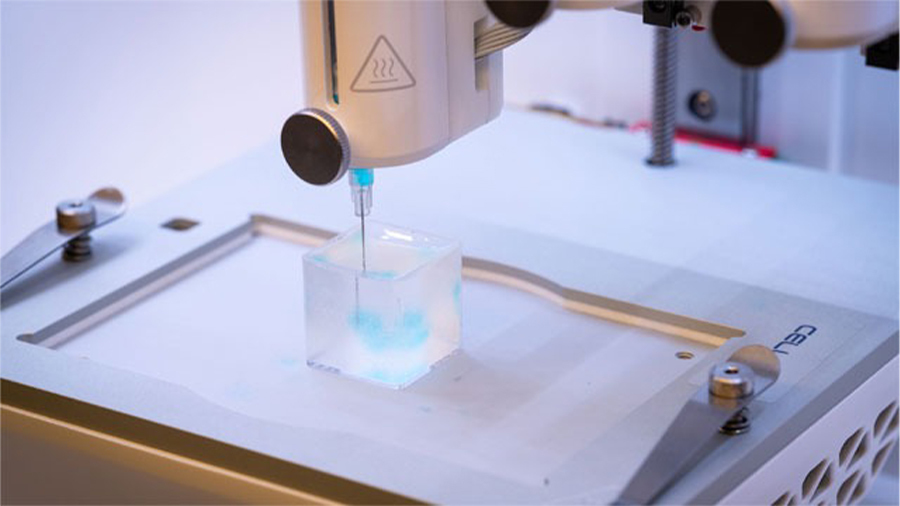
In a nutshell, 3D bioprinting is basically the application of additive fabrication techniques to create three-dimensional structures for tissue engineering. Needless to say, it involves multiple processes with a high degree of complexity, from designing the organic structures to the post-stimulation of the material, known as maturation.
While there are different bioprinting methods, perhaps the most common is an FDM-like process where a viscous material is extruded and deposited layer-by-layer. This material is known as bioink, composed mostly of cells and carrier agents, which is often a biopolymer gel working as a 3D scaffold.
Bioink development is its own field of research that works hand-in-hand with the medical researchers and bioprinter developers. While bioprinting is still in its infancy, many exciting breakthroughs have been reached so far, as we’ll see in this article.
Now, without further ado, let’s talk about some of the most promising organ 3D printing projects to date.
Kidney
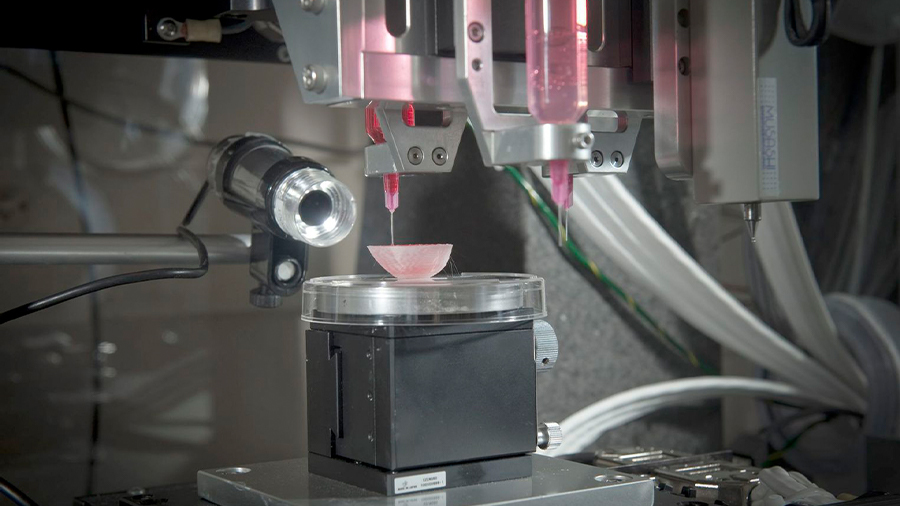
From all the potential organs for 3D fabrication, the kidney is perhaps one of the most difficult to recreate, mainly due to the great complexity associated with its internal structure. Yet, the kidneys are the most needed organs for transplantation, so its the most suitable candidate for organ serial production.
To this end, back in 2016, scientists from the Lewis Lab at Harvard University developed a novel bioprinting method that allowed the creation of small segments of the nephron, called proximal tubules. Nephrons are the most basic structure of the kidney and responsible for all the blood filtering in these organs.
Fast forward to 2019, American bioprinting company Organovo announced the successful automated production of kidney organoids via its own bioprinting platform, the Organovo NovoGen. These are self-organizing stem-cell-based structures that can be produced in large numbers relatively quickly.
More recently, in September 2020, the United Therapeutics Corporation partnered with Israeli regenerative medicine company CollPlant Biotechnologies to apply its material technology (rhCollagen) to kidney bioprinting development.
Liver

Over 4.5 million people are affected by some liver disease in the US. That’s almost 2% of the entire population and, as of today, the only feasible treatment for end-stage liver disease is transplantation. Needless to say, the gap between organ needs and availability keeps widening.
In 2016, researchers from the University of Califonia San Diego were able to 3D print organic tissue that mimicked real liver structures both in architecture and function. Back then, such bioengineered tissues were used by the pharmaceutical industry for drug development and testing.
Organovo (mentioned above with their kidney advancements) was also able to 3D bioprint liver tissue patches, and in 2018, it went further to implant them into living mice. The results were very positive, with tissue retention and functionality verified a month post-implantation. At that time, partial liver transplants were targeted for human trials in 2020, but it hasn’t yet come to be.
Brazilian researchers from the University of São Paulo reported successful bioprinting of “miniature livers” in late 2019. These organoid structures were from human blood cells and performed liver normal functions such as producing proteins, storing vitamins, and even secreting bile. According to the researchers, the entire process took approximately 90 days from collecting the patient’s blood to the final maturing of the mini-livers.
Heart
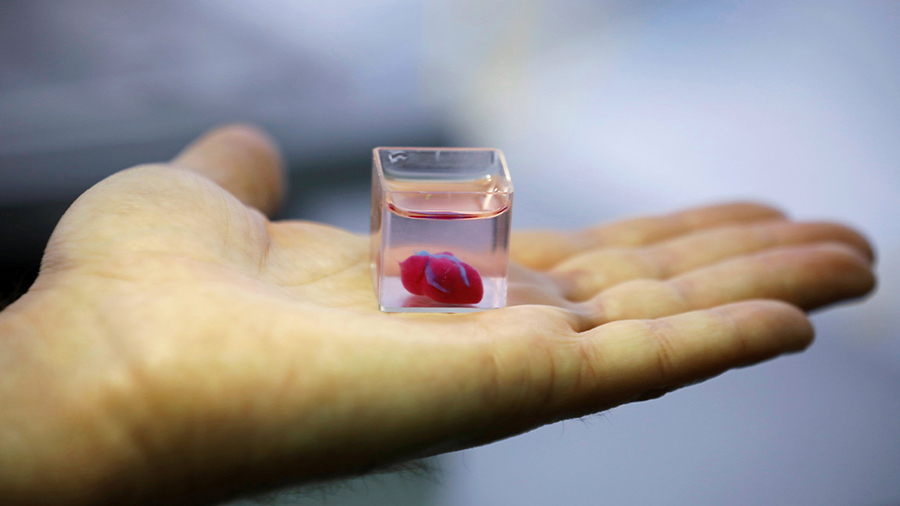
By far the most promising projects of 3D bioprinted organs are for the heart. As organs go, the heart is actually one of the easiest to recreate because it doesn’t employ any complex biochemical reactions. Rather, its primary function is to act as a hydraulic pump.
The Wake Forest Institute for Regenerative Medicine (WFIRM) is an American research institute focused on tissue engineering for various applications, including transplantation. Back in 2018, a WFRIM research group claimed to have 3D bioprinted functional cardiac tissue using mice cells.
In 2019 researchers from Tel Aviv University’s School of Molecular Cell Biology and Biotechnology shook the world with the first-ever fully-vascularized 3D printed mini human heart. This bioprinted organ was made from human cells taken from a patient and carrier gels. TAU’s team is now working to mature the cardiac cells and make them fully functional.
The Chicago-based company Biolife4D has also accomplished a similar breakthrough in 2019, announcing its own bioprinted heart. This one, however, shows extended functionally when compared to the one developed at Tel Aviv University and is much larger too.
With so many important breakthroughs in the last few years, specialists predict that a ready-to-transplant bioprinted heart could be available within the decade.
Cornea
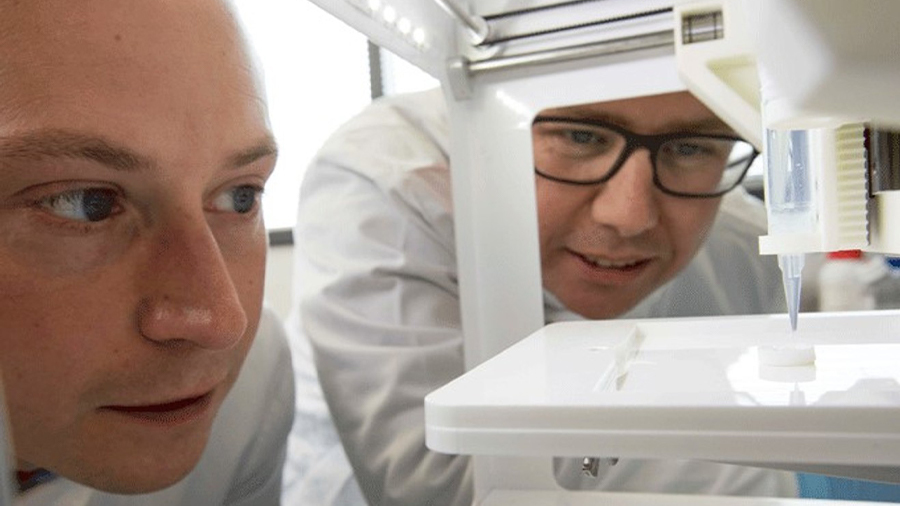
The cornea is the clear, outermost layer of the eye. It’s essential for helping focus our vision and protecting the eye from the environment. Millions of people around the world suffer from corneal blindness due to disease or scarring, often requiring corneal transplants.
In 2018, scientists at Newcastle University were able to 3D print a human cornea for the first time. By combining stem cells with alginate and collagen, a unique bioink was created that could be extruded in circles to form the shape of the cornea in less than 10 minutes.
While the Newcastle University project was a proof-of-concept project, a research team from Marmara University in Turkey has actually made one potentially suitable for transplantation. The paper entitled 3D Printed Artificial Cornea for Corneal Stromal Transplantation was published in June 2020 and shows much promise.
The printing process relies on an aluminum mold where the PVA-based material is deposited by an FDM-like 3D bioprinter. The bioink material showed great biocompatibility in preliminary tests and the optical performance of the corneas was verified through special electron microscopy and UV spectrophotometry.
Bones
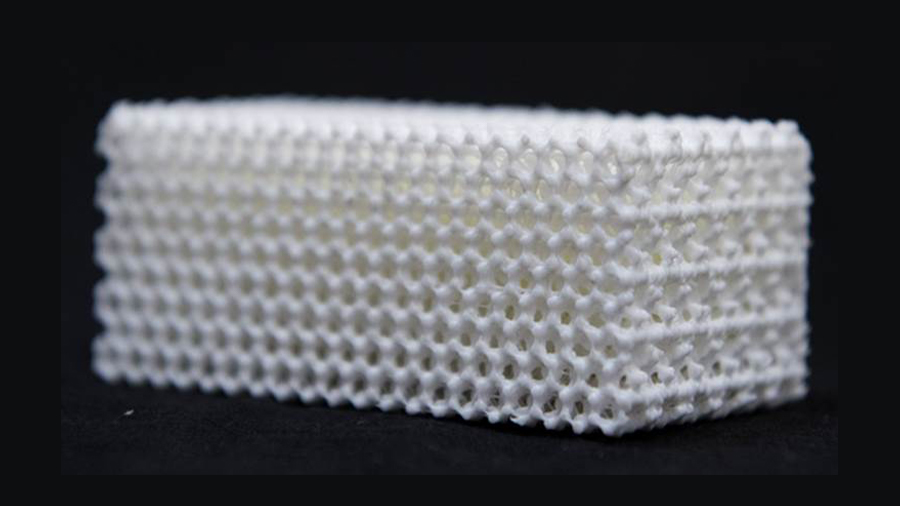
Bones are the main structural components of the human body and people can break or even completely lose bone due to accidents or diseases. For such cases, bone implants are the optimal solution when compared to artificial orthotics, but, unfortunately, they share the scarcity issue of most organs required for transplantation.
The field of 3D printed orthotics is very wide and is perhaps one of the most popular “real-life” applications of metal 3D printing. In 2018, over 100,000 hip cup implants had not only been produced but also implanted in real patients. The so-called Delta-TT cup is produced in titanium alloys via electron beam melting (EBM), an additive manufacturing technique.
For bone bioprinting, however, things are a bit slower. While traditional bioprinting techniques use human cells as feedstock, bone bioprinting usually involves creating scaffold structures where the body will eventually build bone upon. This is what scientists from the University of East Anglia in the UK did in collaboration with the Animal Health Trust in 2019. For this scaffolding project, however, the subjects of the study were living horses.
This year, researchers from the Department of Biomechanical Engineering at Delft University of Technology in the Netherlands showed valuable findings in scaffold 3D printing with biodegradable pure magnesium. This material is optimal for bone scaffolding since it shares similar mechanical properties to natural bone and also stimulates its formation.
Skin
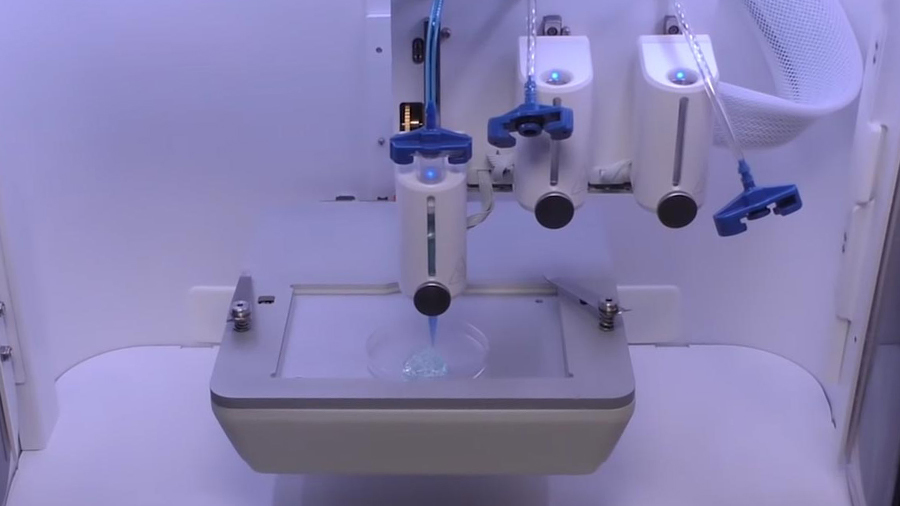
Skin, the largest organ in the human body, is also a goal for bioprinting as it’s prone to many injuries. The treatment for serious skin injuries like burning or poisoning has, again, been transplanting. In this case, however, the patient is their own donor, transplanting healthy skin from other parts of the body.
Unfortunately, this technique is only viable for relatively small damaged areas, which is why there’s a lot of development and interest in skin bioprinting. The idea is to produce patches of skin made from the patient’s own cells, thus providing a source of grafts that are 100% compatible with the receiver.
In 2019, researchers at Rensselaer Polytechnic Institute in New York were able to 3D print “living” skin patches with blood vessels. This is a critical milestone as every bioprinted skin so far has lacked vascular function. The next step is to develop a way to integrate, at the microscopic level, the blood vessels from the patch to the patient’s own skin.
On another front, Australian start-up Inventia Life Science has been working on a device that could potentially 3D print skin directly onto a patient’s wound. The skin cells would be deposited as tiny droplets using the same principle as inkjet printing. Inventia is a well-known player in the biotech industry and has recently received a huge investment for its 3D printed skin project in 2020.
Ovaries
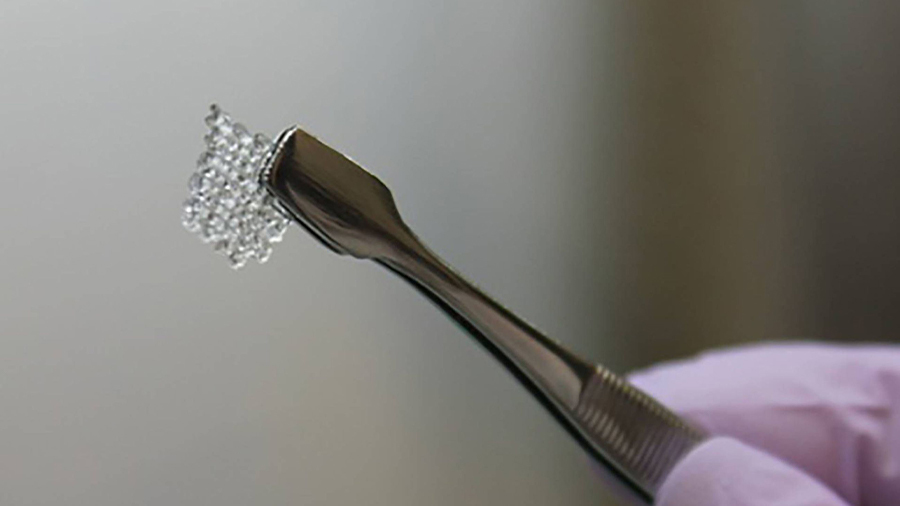
The ovaries are an essential part of the complicated biological process of child-bearing. Sadly, thousands of women have ovary issues every year in the US, which can lead to infertility. From auto-immune diseases to unrelated cancer treatment like chemotherapy, the damage is mostly irreversible.
Researchers at Northwestern University in Chicago are fully committed to developing an artificial ovary that can be transplanted into women so they can have children. In 2017, a team lead by Monica Laronda used bioprinting techniques that allowed infertile mice to give birth.
Rather than replicating the entire ovary architecture, the team developed different 3D printed scaffold structures that were then implanted into the mice and allowed to grow over time. Some structures proved to be quite efficient: Of the seven mice that mated with the artificial ovaries, three eventually gave birth to healthy pups that went on to become typical adult mice.
In 2020, the same team from Northwestern University identified the structural proteins from pig ovaries, which have virtually the same type of proteins found in humans. According to Laronda, the goal is to use these proteins to engineer a biological 3D printed scaffold capable of supporting a bank of potential eggs and hormone-producing cells.
Ear
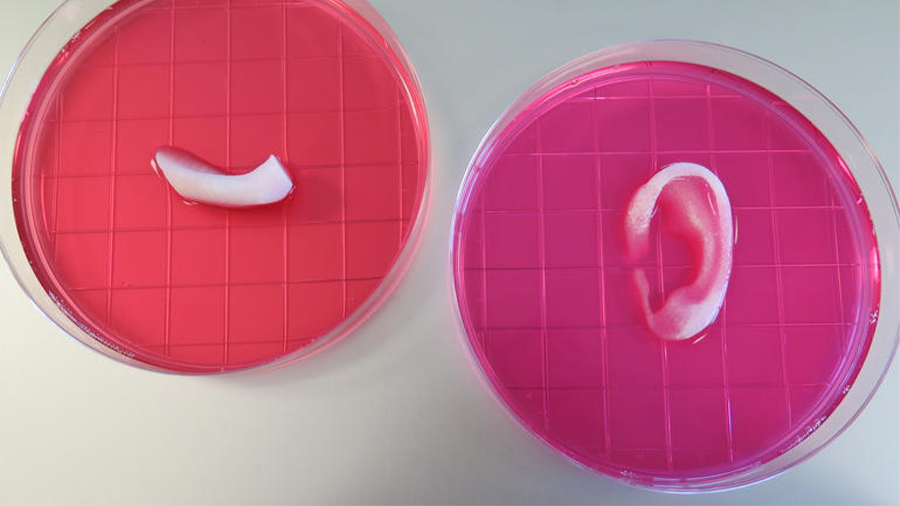
The ears are not only functional parts of the human body but also provide a certain degree of aesthetics. As a very social species, humans are constantly aware of how they look. It’s not always a matter of looking good or pretty, but mostly looking alike.
Reconstructive surgery is a medical field that aims to restore function and normal appearance to abnormalities or deformities generated from birth defects, inflicted trauma, and medical conditions. The nose and ears are complex structures that are incredibly difficult to rebuild, especially in cases of complete destruction.
However, creating complex structures is one of 3D printing’s unique capabilities. In 2016, researchers from the WFIRM reported successfully implanting 3D printed living ear and muscle structures into animals. Such parts function mostly as structural components rather than perform chemical interaction, simplifying the bioprinting process.
Fast forward to 2019, a team from the University of Wollongong in Australia, along with professor Payal Mukherjee, has developed a 3D bioprinter capable of producing human ears for reconstructive surgery. The so-called “3D Alek” printer uses human cartilage material and is currently installed at the Royal Prince Alfred Hospital in Sydney. The goal is to expedite the development of patient-specific bioink material to grow cartilage material.
Lead image source: Kevin Dzobo via Next Einstein Forum
License: The text of "3D Printed Organs / Body Parts: Most Promising Projects" by All3DP is licensed under a Creative Commons Attribution 4.0 International License.



